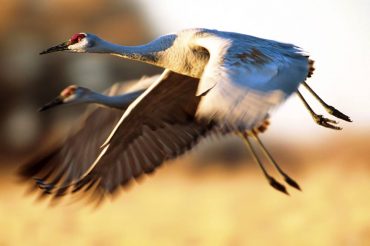
September and October are the two busiest months for fall migration. Millions of birds that nested in the north are moving southward for the winter. Little by little, this mass movement of wings visits our yards, parks, wildlife refuges and West Sound birding hotspots. The fall bird population is not only at peak numbers but this is the time to expect some surprises.
Juvenile birds are responsible for the population’s high numbers. The abundant supply of natural foods influences the movement of the migrating birds. So does the weather.
Birds use the prevailing winds and pressure systems, both highs and lows, when they travel. This is why popular birding areas enter the picture. Birdwatchers are familiar with these places. Many are visited regularly in hopes of seeing a bird out of the ordinary.
Sometimes a storm will throw the juvenile birds off course. Then they become separated from adults and might take a migration route different from the one their parents follow. When this happens, surprises occur — like sandhill cranes being seen off the beaches of Kingston or Indianola.
The northern portion of the Kitsap Peninsula produces the bulk of West Sound’s unexpected bird sightings. Migrating birds from the north must cross the Strait of Juan de Fuca and Admiralty Inlet. They are influenced by the autumn winds.
Prevailing winds from the south can stall migrants from the north. Then they gather in “jumping off” places like the San Juan Islands and the tip of Vancouver Island. When the intensity of those winds diminishes, the waiting birds head for the Olympic and Kitsap peninsulas. Areas along the water often produce exciting birding.
Point No Point, near Hansville, is a popular hotspot. It provides good public access to the beach and marsh. Numerous rare or uncommon birds have been seen here. Unusual sightings are not only hoped for, they are expected during the fall.
A mountain bluebird sitting on a piece of driftwood on the shore is one example of an unexpected surprise in this spot. More than one of these sightings have not only landed on the birding hotlines throughout the state, but they sometimes make the news.
A magnificent frigatebird, a species seen in Mexico and other warm ocean waters, found its way to the Point. Birders flocked to see this bird that first showed up in Tacoma. It had become disoriented and turned northward. Eventually, it flew in the correct direction and headed south, where it belonged. The theory advanced suggested the magnificent frigatebird probably landed on a ship during a storm and took the wrong migration route.
The black-and-white plover, a species found in Europe and Asia, also created excitement at the Point. Its stopover was long enough for many birdwatchers to add it to their North American lifelist.
The large numbers of migrating birds also create activity and excitement in West Sound yards. Some species are only seen during migration but others wintering in the region begin arriving at this time of the year. That makes this the time to put out feeders, both new ones and those that may have been stored away during the summer.
Birds moving throughout this area won’t forget these food sources. Many will stay to winter here. Others will visit long enough to rest and refuel before continuing their southern journey. Some of these can be surprises. Warblers, flycatchers and other summer birds pass through our yards, giving us one last look at them until next spring.
This is the time to inventory the feeders. Some may need cleaning. Others need to be repaired or replaced. There is an almost endless variety of feeders on the market today. In the Northwest, a good feeder keeps the food dry during the rainy fall and winter.
Feeding birds has grown to become one of the most popular activities throughout North America but food preferences can vary from one part of the country to another. Small black sunflower seeds are the preferred seed for West Sound birds. Nuthatches, chickadees, house, purple and goldfinches, evening grosbeaks, red crossbills, pine siskins, towhees, jays and sparrows are attracted to sunflower seeds in the shell as well as those that have been shelled.
Birdseed mixes vary from good mixes to almost worthless ones. The better mixes cost more because they don’t use fillers like the red milo seed. This seed is popular with pigeons and doves.
A good birdseed mix contains little to no milo. Other seeds found in popular mixes are white millet, shelled sunflower seeds and shelled peanuts. A mix that contains only the black sunflower seeds attracts the most bird activity and the most variety of species.
In addition to birdseed, there are the mixes that contain lard, peanut butter, rendered suet, bits of shelled sunflower seeds, peanuts, corn and oats. They attract birds that eat seed as well as those that don’t. The small bug eaters prefer these high-protein mixes.
These bird blocks are sold in stores that carry bird-related products. They’re also available in other retail outlets and some people make their own mixture.
September and October are busy bird months. The fall migration is reaching its peak and many birds are checking the feeder offerings. The West Sound region will be enjoying both of these activities in the coming weeks.
Recipe for Bird Cakes or Bird Pudding
Ingredients:
- 1 quart rolled oats (such as Quaker Oatmeal)
- 1 pound lard
- 1 cup peanut butter (optional)
Instructions:
Melt the lard in a frying pan on low heat. Mix the ingredients together. Cool before putting in feeder.
This recipe can be doubled, even tripled in order to make larger amounts. Does not need to be refrigerated.

































Comments